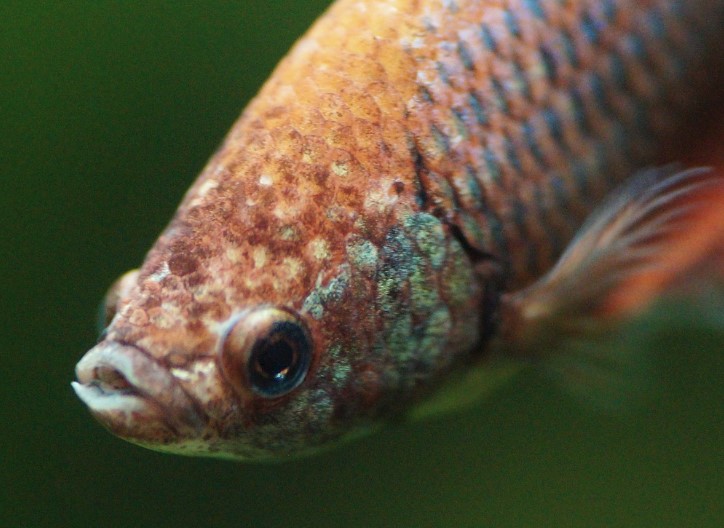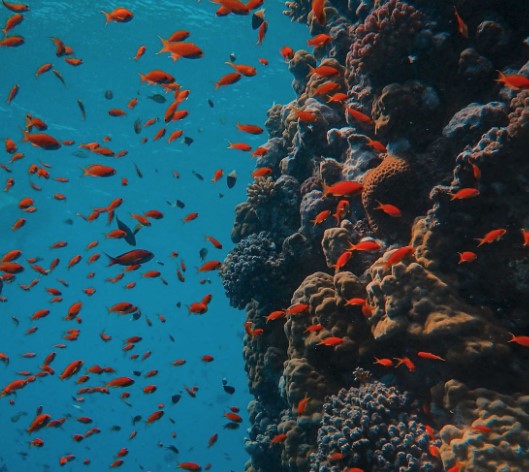How Many Snails in Betta Tank?
Nowadays, it is not uncommon to see aquarists add snails to their betta tanks. Indeed, they do this to enhance the beauty of their aquariums, get the snails to clean up the tank, and keep the water in the aquarium safer for the fish. One of the hurdles new aquarists deal with is determining the right number of snails to add to such tanks. In truth, I faced that challenge when I started out, I was regularly trying to work out the right number of snails in betta tank.

Do you currently face the same obstacle? If so, don’t sweat it because I am here for you. As an experienced aquarist, I will walk you through the different approaches for determining the number of snails per tank that return the most desired results, factors that determine the best outcomes, and much more.
How to Determine the Number of Snails in a Betta Tank
The appropriate snail population per gallon primarily depends on the sizes and species of snails in question. We can determine that using different approaches. First, follow this rule to do it. The rule of thumb is to add one small snail per gallon (for less than 5-gallon tanks) and two snails per 5 gallons for the big snails. Please note that the aim is to ensure your snails comfortably move around and thrive.
While at it, you must never leave room for overcrowding (because you may have other things in the aquarium). Plus, you must ensure the entire system is healthy, so you don’t have cases of disease outbreaks or deaths. Yes, it works!

Permit me to clarify it further. Divide the tank’s capacity by 5. Afterward, multiply the result by 2 to get the maximum number of mollusks in one fish tank. Let’s work it out together. Now, let’s assume you have a 20-gallon tank. It means 20 ÷ 5 = 4; 4 x 2 = 8.
Therefore, the maximum number of snails you should have in the aquarium is 8. With this formula, it doesn’t matter how big your tank is because it applies to all of them. However, the major downside of this concept is that it doesn’t consider gastropods’ personalities, species, and a bunch of other factors.
Alternatively, use the second approach that entails applying specific numbers that professional aquarists have established over the years. Indeed, they arrived at the numbers after closely examining the species, personalities, sizes, and temperaments of the two tank mates (bettas and snails). They also considered their impacts on the surroundings. Well, I have compiled it in the table below:
| S/N | Name of Snail | Average Size (inches) | Number of Snails per 5-gallon Betta tank |
| 1 | Mystery | 1.5 – 2 | 1 |
| 2 | Nerite | 0.5 – 1 | 1 – 2 |
| 3 | Ramshorn | 0.25 – 1 | 3 – 6 |
| 4 | Japanese Trapdoor | 1 – 2 | 2 – 4 |
| 5 | Assassin | 1 – 2 | 1 – 2 |
| 6 | Pond | 1 – 2 | 1 – 3 |
| 7 | Ivory | 1 – 2 | 2 – 5 |
| 8 | Rabbit | 2 – 3 | 1 – 2 |
Great as this concept may seem, the limitation of this table is that there may be species you want to add to your aquarium that is not in the table. In that case, you can do further research to find out what works for it or apply the first technique above.
Factors That Determine the Number of Snails in a Betta Tank
Sometimes, some people love to take bold steps to introduce a paradigm shift. Therefore, if you wish to devise the suitable number of snails in such a tank without using the two concepts above, you have to consider the factors I have dissected below.
Other Aquatic Life
You could have fish (other than bettas) or plants in the aquarium. If that’s the case, consider the potential impact the snails make on their tank mates. Some species of mollusk may not be compatible with plants or even fish. In a similar vein, others may even be prone to causing problems in the tank. For example, some snails may be aggressive or snack on plants. No doubt, this is a problem.
Therefore, you need to understand the personalities or temperaments of the tank mates because you cannot afford to pair two or more strange bedfellows. For instance, studies show that Apple, Pond, and Giant Colombian Ramshorn snails eat live plants, while Assassins attack fellow snails. Therefore, always have that at the back of your mind before introducing them to your aquarium.
Reproduction
Snails are fertile aquatic creatures. Therefore, you must consider their reproductive ability before adding them to such a tank. In short, some snails are hermaphrodites (such as Apple), meaning they can produce sperms and eggs and mate as male, female, or both. If you get it wrong, and the number of snails in betta tank can grow rapidly.
So, consider your gastropods’ reproductive abilities before determining the number to introduce to your aquarium because you don’t want to keep seeing eggs everywhere or experience a population explosion. Several snails lay eggs every two weeks through self-fertilization. In fact, they can lay up to 45 eggs at once!
After four weeks, they hatch the eggs. Think of what will happen to your aquarium in one month! To avert that, go for the gonochoric species; opt for the males if you don’t want to keep seeing eggs everywhere.
Health and wellbeing
The most common talk is about snails coming into your tank to clean up the ecosystem, but nobody pays attention to the health and wellbeing of the mollusks. How sad!! So, consider snail health before determining the ideal number of gastropods you need in your tank. If you notice your snails are experiencing health issues or aren’t thriving in the aquarium, that’s a sign that all is not well with them.

The most common signs include:
- An increased mortality rate among the mollusks
- Heightened aggression or territorial behavior among the gastropods
- Stressed or lethargic snails
- Low-quality water and high levels of waste in your aquarium. Remember, your snails are in the aquarium to clean them in the first place.
One or more of the signs above is a red flag. Once you notice them, correct them instantly. You can tackle that by adjusting the snail population. Sure, you control the population by removing some snails from the tank or increasing the tank size. Afterward, watch it closely to find out if things will get better.
Filtration system
The aquarium filtration system removes physical and soluble chemical waste products from the ecosystem, simplifying its maintenance. Indeed, the system plays a pivotal role in maintaining the overall health and balance of the aquarium. Nobody tells you that while snails munch on algae, dead plant matter, and uneaten fish food, they also excrete waste and other byproducts (bioloads).
Bioload (biological load) is the totality of waste present in a water column. Snails are living creatures that excrete feces from their anus and live with them in the same water. The poop contaminates the water! Thankfully, the tank’s filtration system helps to reduce the bioloads. Therefore, if you don’t step up your filtration system, you don’t need a Ph.D. in Malacology to know that bioloads can cause issues for snails, especially in a highly populated tank.
Likewise, bioloads may lead to other problems like a disease outbreak among your fish.
Snail Sizes and Species
Yes, I am saving the best for the last. It is a no-brainer that snail sizes and species are essential factors you have to consider before determining the appropriate number of snails to add to your tank. When you overcrowd your tank, you suffocate your snails, and nobody should blame them if they look for means to escape. In general, different species of snails have unique care requirements.
Therefore, you should research and understand the care requirements of the snails you (intend to) breed to give them the best possible care. For sizes, big snails need more space to thrive, while the smaller ones require less space. Therefore, you have to consider snail sizes and their species while determining the suitable number of gastropods in the fish tank.
Final Thoughts
Even though a couple of aquarists believe that the best bet is to have ONE snail in your betta tank, the vast majority don’t seem to subscribe to that. Aquarists who settle for one snail always do that as a means of averting the bioloads associated with having many of them in tanks.
Nonetheless, with proper filtration and proper feeding, you can reduce bioloads. Put simply, you can reduce your bioloads if you don’t overfeed your gastropods. On the other hand, experts who want more mollusks in tanks desire to maximize the benefits of having them around. So, if you are caught up in the dilemma of choosing one mollusk or more, apply your discretion (common sense). If you opt for more,
I have given you all the tricks for determining the suitable number of snails you need in your fish tank. If you still doubt your ability to make that decision, don’t hesitate to get in touch with me for expert advice. I advise you go for more due to its perks; do it and share your findings with me…







